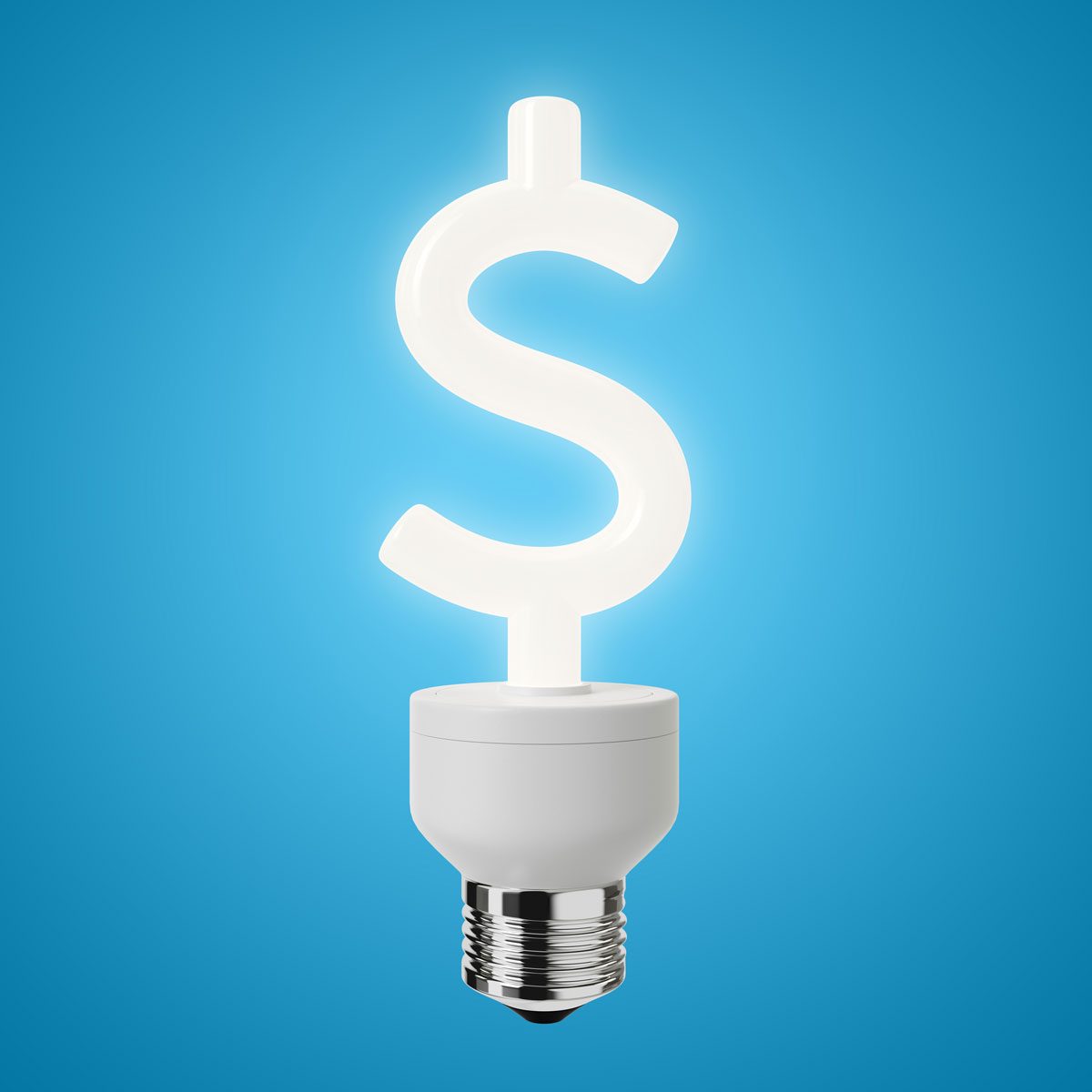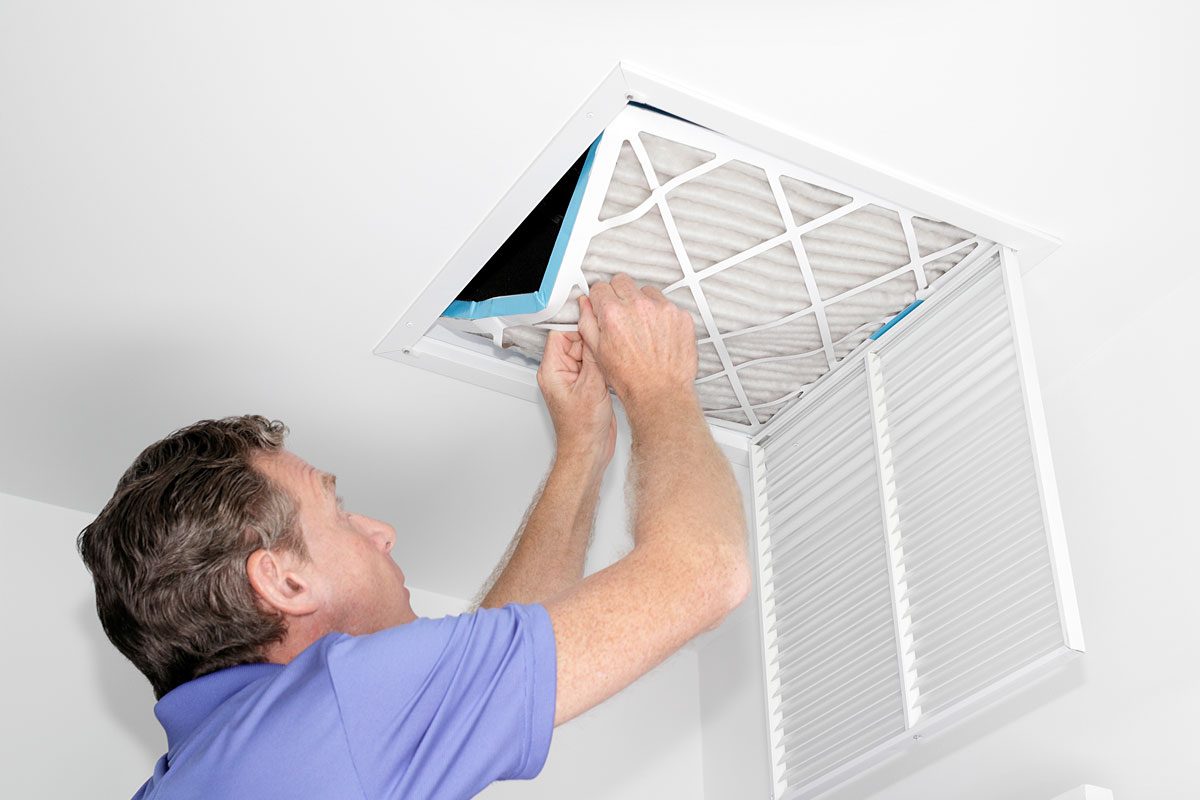You could save big bucks by doing this simple task—no electrician required. What do you have to lose?

Save Up to 15% on Your Electric Bill by Doing This 10-Minute Task

I have a neighbor who needs help with home-improvement tasks around the house, and as an electrician, I’m happy to oblige. So when she told me she was about to pay a hundred bucks on a service call for a task that takes about 10 minutes, I figured I better intervene. All she had to do was spend $20 at a hardware store or online, and I’d do the rest. To top it off, she’d see lower energy bills and have healthier indoor air to boot.
What is this mystery task, and do you need to do it too? Yes, you do, but don’t take it from me. I talked to an expert at Frontdoor, a home-services app that connects homeowners to fully trained, on-staff virtual experts to solve home-maintenance issues. Ahead, he’ll walk you through it step-by-step.
Read on to find out how you can save money and feel great about prolonging the life of one of your home’s most expensive investments.
Get Reader’s Digest’s Read Up newsletter for more home-safety tips, humor, cleaning, travel, tech and fun facts all week long.
What home-maintenance task can help you slash your energy bill?
It pays to change the air filter on your heating, ventilation and air conditioner (HVAC) system. Whether you have central heat and air, a furnace or a heat pump, changing the filter regularly will reduce your energy bill and prolong the life of your system, according to Micah Sherman, a Frontdoor HVAC technician with more than 12 years of experience.
I know what you’re probably thinking: I don’t know anything about heating and air conditioning. Is this really something I can do? It absolutely is something you can do, and Sherman agrees.
“Yes, this is a very easy task; most anyone should be able to do it themselves,” he says. “No special skills are required. And if tools are needed, they are ones found in most homes—for example, a screwdriver.”
Why should you change your HVAC filter?

Changing the filter on your HVAC unit keeps it running smoothly. Most heating and air conditioning systems recirculate the air inside your home rather than draw in fresh air from outside. The old, stale air passes through the filter, which removes contaminants like dust, dander and pollen. Then, it gets “conditioned” (heated or cooled) before being vented back into your living spaces.
“Dirty air filters will cause your system to work harder and can even damage many components within the system,” Sherman says, noting that the evaporator coils, blower motor and compressor may all be affected. Your HVAC unit is a complex piece of machinery. When any part of it becomes strained by a clogged filter, the system could overheat, freeze up or run longer than necessary trying to keep up.
Bottom line? Ignoring the filter “will harm the unit, make it run less efficiently and waste money,” Sherman says.
How much money could changing your filter save you?
Changing your HVAC filter can reduce your energy bill by 5% to 15%, according to Energy Star. Considering the average U.S. household spends more than $900 a year on heating and cooling, this simple task could net you over $135 a year in savings. If you pay more for energy, your savings will be even higher.
The reason you can save that much has to do with how long your HVAC has to run to keep you comfortable. Because clogged filters impede the airflow through the unit, it has to run more frequently and for a longer time period than it would with a clean filter. Plus, the air you breathe stays gross and polluted when you have a dirty filter. Why wouldn’t you change it?
How often should you change your filter?
“Circumstances play a large part in how often air filters should be changed,” Sherman says. “Depending on the air filter type, homeowner health needs and pets, they should be changed at different intervals.”
One good rule of thumb is to judge based on the thickness of the filters in your particular unit. Change filters that are:
- 1 to 2 inches thick: Every one to three months
- 3 to 4 inches thick: Every six to 12 months
Not sure which ones you have? The best way to figure it out is to find your HVAC and take a look, then snap a picture so you know which one to buy. (Ahead, we’ll walk you through how to find the filter.)
If you have pets or allergies, change your filters at the more frequent interval for your type and thickness. So if your filter is an inch thick, you’d change it every month instead of every three months. That said, if they don’t seem to be getting very dirty, or you’re not experiencing any health issues, it’s OK to wait.
Want a gold star for doing things like an HVAC pro? “The best practice is to check them once a month, and if the air filter is dirty, then change it,” Sherman says. “If it’s clean, leave it and check again next month.” Once you hit the longest interval for your filter type, go ahead and swap it out.
How do you change your HVAC filter?
It’s easy, but you need to find the filter compartment first, and that will depend on your HVAC system. If you have traditional central heat and air, with a furnace and air handler, the filter compartment is usually located between the air handler and blower motor. This will be in your attic or a closet in your home. Look for a 1- to 4-inch door with a hinge or removable cover. You should not need any tools.
If you have a heat pump, check the wall where air returns to the unit from your living space. “Some air filters are located behind return air grilles, which may require a flathead screwdriver to pry the handle loose to open the grill,” Sherman says.
Here’s what to do once you find the filter compartment:
- Open the filter door or return air grille.
- Remove the old filter. It will slide out easily.
- Add the new filter, paying attention to the orientation. “Install the new one with the arrows on the side of the air filter facing toward the air handler/furnace,” Sherman says.
- Close the door or reattach the grille.
- Set yourself a reminder to check back in one month, and order new filters to have on hand.
About the expert
|
Why trust us
At Reader’s Digest, we’re committed to producing high-quality content by writers with expertise and experience in their field in consultation with relevant, qualified experts. We rely on reputable primary sources, including government and professional organizations and academic institutions as well as our writers’ personal experiences where appropriate. We verify all facts and data, back them with credible sourcing and revisit them over time to ensure they remain accurate and up to date. For this piece, Ally Childress tapped her experience as a professional electrician and home-improvement writer. Read more about our team, our contributors and our editorial policies.
Sources:
- Micah Sherman, HVAC technician at Frontdoor; email interview, Feb. 27, 2025
- Energy.gov: “Home Cooling 101”
- Energy Star: “Save on Heating Costs with Energy Star This Season”























